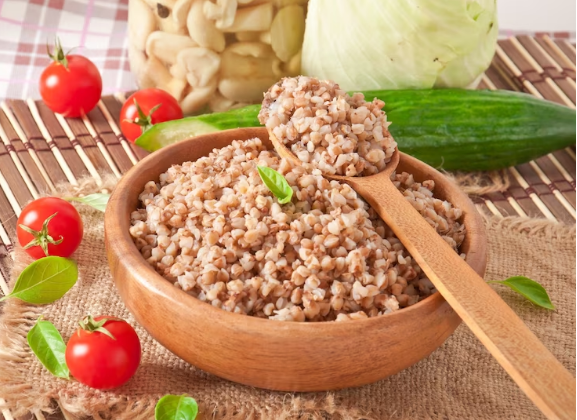
How To Cook Quinoa
Cooking quinoa is a straightforward process. Quinoa is a nutritious grain that can be used as a base for various dishes or served as a side dish. Here’s a basic stovetop method to cook quinoa:
What is Quinoa?
Quinoa (pronounced “keen-wah”) is a highly nutritious, gluten-free pseudo-cereal that is often considered a whole grain due to its grain-like appearance and culinary uses. It comes from the flowering plant Chenopodium quinoa, which is native to the Andean region of South America, particularly Peru, Bolivia, Ecuador, and Colombia.
Quinoa is an ancient crop and has been cultivated for thousands of years by indigenous peoples in the Andean region. It was a staple food for the Incas and was often referred to as the “mother of all grains” by them.
Key characteristics of quinoa:
-
Nutritional Value: Quinoa is rich in protein, containing all nine essential amino acids, making it a complete protein source. It is also a good source of dietary fiber, vitamins (B-vitamins, vitamin E), minerals (iron, magnesium, phosphorus, zinc), and antioxidants.
-
Gluten-Free: Quinoa is naturally gluten-free, making it an excellent grain alternative for those with gluten sensitivity or celiac disease.
-
Versatile: Quinoa has a mild, nutty flavor, and its versatile nature makes it suitable for a variety of dishes. It can be used as a base for salads, added to soups, used in stir-fries, or even cooked as a side dish like rice.
-
Easy to Cook: Quinoa is quick and easy to cook, usually taking about 15-20 minutes to prepare.
-
Color Varieties: Quinoa comes in different colors, including white, red, black, and tri-color blends. Each variety has a slightly different taste and texture.
-
Saponin: Quinoa seeds are coated with a bitter-tasting compound called saponin, which acts as a natural defense against pests. Commercially available quinoa is usually pre-rinsed to remove most of the saponin, but it’s still recommended to rinse it again before cooking.
Quinoa’s popularity has grown significantly in recent years due to its health benefits and adaptability in various cuisines. It has become a staple ingredient in many health-conscious and vegetarian/vegan diets around the world.
What Is The Ratio Of Water To Quinoa?
The general ratio of water to quinoa for stovetop cooking is 2 parts liquid (water or broth) to 1 part quinoa. Here’s the standard ratio:
- 1 cup quinoa
- 2 cups water or vegetable broth
This ratio ensures that the quinoa cooks evenly and absorbs the right amount of liquid to become fluffy and tender. If you’re cooking a larger or smaller quantity of quinoa, you can maintain the 2:1 ratio.
However, keep in mind that some quinoa brands or varieties might require slightly different ratios, so it’s always a good idea to check the package instructions for specific cooking recommendations. Additionally, if you prefer a softer or firmer texture, you can adjust the water-to-quinoa ratio accordingly. For example, using 1.75 cups of water for 1 cup of quinoa will result in a slightly firmer texture, while using 2.25 cups of water will make it softer.
Do You Need To Soak Quinoa Before Cooking?
Unlike some other grains like rice, quinoa does not necessarily need to be soaked before cooking. Soaking quinoa can help remove the bitter-tasting saponin coating, which naturally occurs on the outer layer of the quinoa seeds. Most commercially available quinoa is already pre-rinsed to remove most of the saponin, making soaking less necessary.
If you want to be on the safe side or have unprocessed quinoa that is not pre-rinsed, you can soak it to help reduce any bitterness. Here’s how you can do it:
- Measure the desired amount of quinoa and place it in a fine-mesh strainer.
- Rinse the quinoa under cold running water for a minute or two, gently rubbing the seeds together to remove the saponin.
- Soak the rinsed quinoa in a bowl of water for about 15 minutes.
- After soaking, rinse the quinoa again under cold water and drain thoroughly using the strainer to remove any excess water.
By following these steps, you can enjoy quinoa with a milder taste. However, if your quinoa is pre-rinsed or if you prefer not to soak it, you can still cook it directly without any problem. The key is to rinse the quinoa well under cold water before cooking to remove any remaining traces of saponin.
How To Cook Quinoa
Ingredients:
- 1 cup quinoa
- 2 cups water or vegetable broth (for added flavor)
Instructions:
-
Rinse the Quinoa: Place the quinoa in a fine-mesh strainer and rinse it under cold water for a minute or two. Rinsing helps remove the bitter-tasting saponin coating on the quinoa.
-
Toast the Quinoa (Optional): For a nuttier flavor, you can toast the rinsed quinoa in a saucepan over medium heat for a few minutes until it’s dry. Stir continuously to prevent burning.
-
Cooking Quinoa: In a saucepan, combine the rinsed quinoa and water or vegetable broth. Bring it to a boil over medium-high heat.
-
Simmering: Once it reaches a boil, reduce the heat to low and cover the saucepan with a lid. Let the quinoa simmer for about 15-20 minutes or until the quinoa has absorbed all the liquid. You’ll know it’s done when the quinoa is tender and the tiny white “tails” have popped out of the seeds.
-
Resting: After cooking, remove the saucepan from the heat and let the quinoa sit, covered, for about 5 minutes. This allows the quinoa to fluff up and finish cooking evenly.
-
Fluffing: Use a fork to fluff the quinoa gently.
Now your quinoa is ready to serve! You can use it as a base for salads, Buddha bowls, or as a side dish alongside your favorite protein and vegetables. Quinoa is versatile and can be flavored with various herbs, spices, and sauces to suit your taste preferences. Enjoy!
